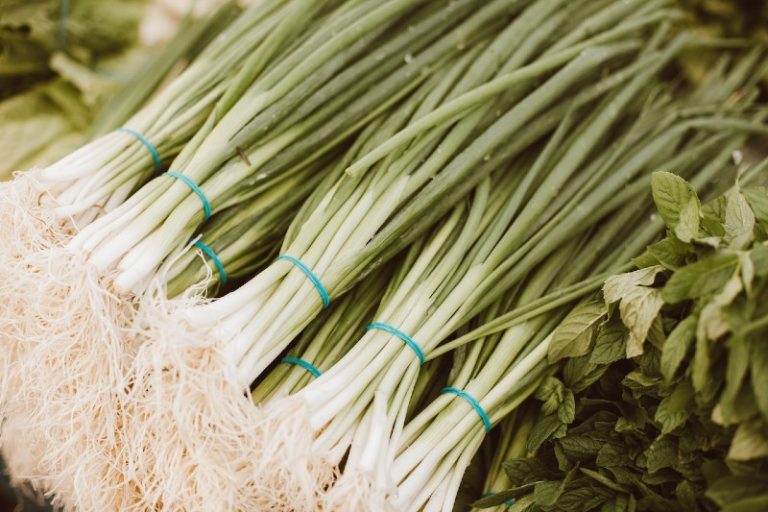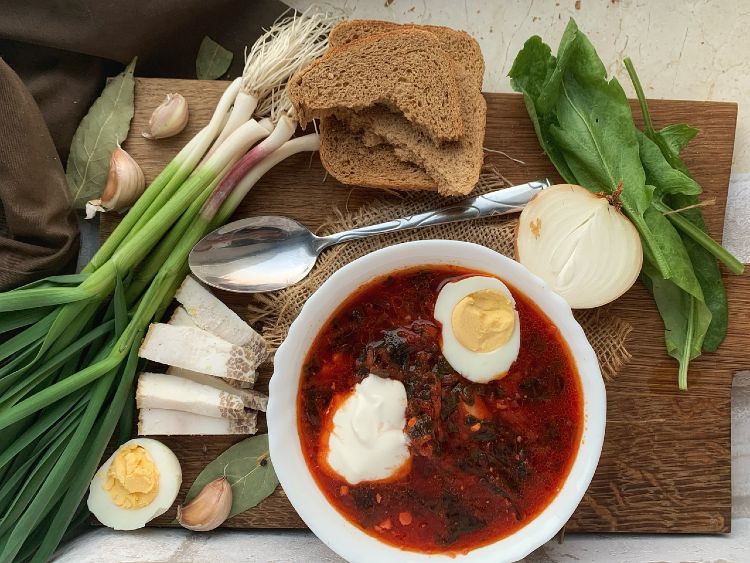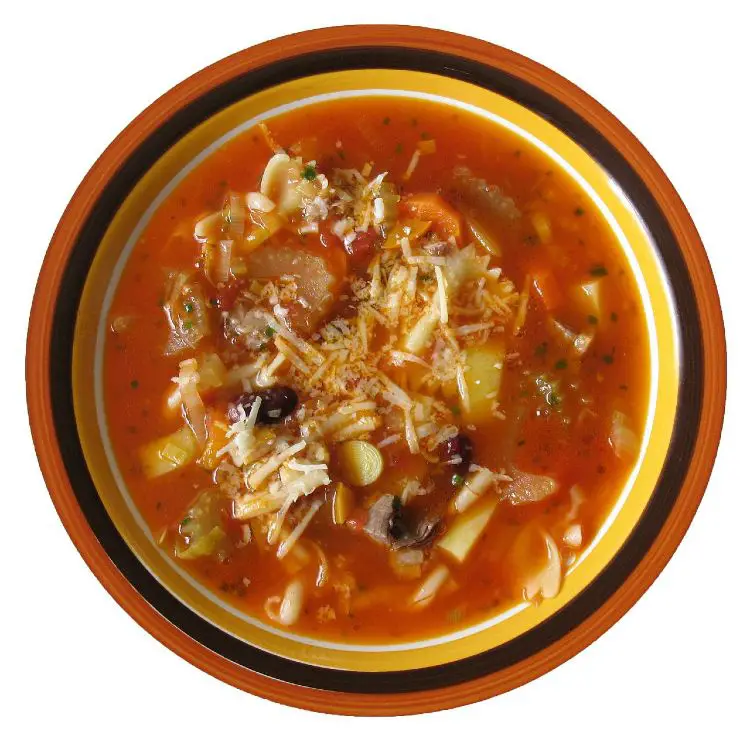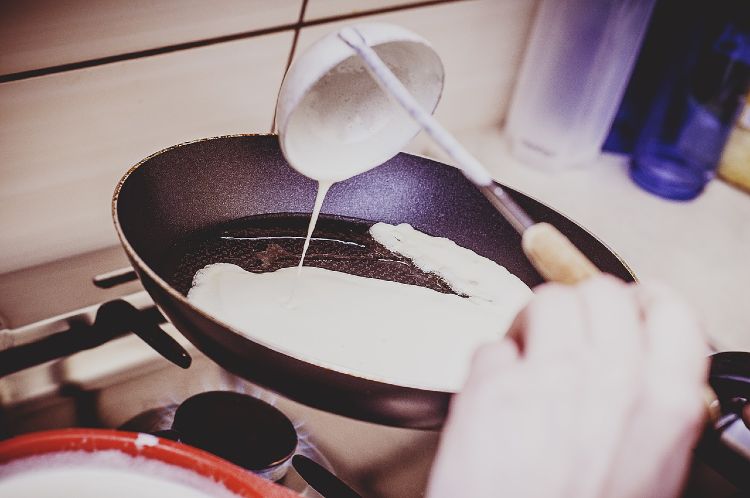The Scoop on Single Cream: How to Choose the Right Substitute Every Time
Single cream, with its velvety texture and rich flavor, has long been a staple in kitchens around the world. From adding depth to sauces and soups to lending a luxurious touch to desserts, its versatility knows no bounds.
While single cream plays a pivotal role in enhancing the taste and texture of various dishes, it often poses challenges for individuals with lactose intolerance, dairy allergies, or those following a vegan diet. This is where single cream substitutes step in, offering a solution that doesn’t compromise on flavor or functionality. By understanding the characteristics and applications of these alternatives, individuals can continue to enjoy their favorite recipes while adhering to their dietary choices.
Single Cream Substitutes Quick Comparison Chart
| Substitute | Fat Content (%) | Flavor Profile | Best Used In |
|---|---|---|---|
| Whole Milk | 3-4 | Mild | Cooking, Baking |
| Half-and-Half | 10-18 | Creamy, Rich | Cooking, Baking |
| Evaporated Milk | 6-8 | Slightly Caramelized | Cooking |
| Sour Cream | 18-20 | Tangy | Cooking, Dips |
| Yogurt | Varies | Tangy | Cooking, Baking, Dips |
| Crème Fraîche | 30-40 | Rich, Slightly Tangy | Cooking, Dips |
| Buttermilk | 1-2 | Tangy, Acidic | Baking |
| Mascarpone | 40-50 | Sweet, Creamy | Desserts |
| Ricotta Cheese | 10-14 | Slightly Sweet | Cooking, Baking |
| Coconut Cream | 24-30 | Coconutty | Cooking, Baking |
| Almond Milk | 1-2 | Nutty | Cooking, Baking |
| Oat Cream | 15-20 | Oaty, Mild | Cooking, Baking |
| Cashew Cream | 20-25 | Nutty, Rich | Cooking |
| Soy Milk | 2-4 | Beany, Nutty | Cooking, Baking |
Dairy-Based Substitutes
1. Whole Milk
Whole milk is a commonly available alternative to single cream, especially when you’re in a pinch. However, whole milk has a lower fat content than single cream, generally around 3.25% to 4%. To emulate the richness and creaminess of single cream, you can add butter to whole milk. A general ratio to consider is:
- 1 cup of single cream substitute = 7/8 cup of whole milk + 1/8 cup of melted unsalted butter
This mixture will not perfectly mimic the properties of single cream but will get you quite close in terms of fat content and texture. Make sure to melt the butter and mix it thoroughly with the milk to ensure an even consistency.
Flavor Profile
Whole milk has a much milder flavor compared to single cream. When butter is added, the fat content increases, somewhat mimicking the mouthfeel and richness of single cream. However, the taste will be less complex and less creamy than single cream.
Appropriate Uses
- Sauces and Gravies: This substitute works well in lighter sauces and gravies where the creaminess is desirable but not critical.
- Baking: In recipes like muffins, cakes, and quick breads, using a whole milk and butter mixture can provide satisfactory results.
- Custards and Puddings: For less-rich versions of these desserts, the mixture can be used, although the final texture may be a bit less creamy.
- Coffee and Beverages: If you’re looking to add a touch of richness to your hot drink, this combination can suffice in the absence of single cream.
2. Half-and-Half
Half-and-half is a dairy product that consists of equal parts whole milk and light cream, resulting in a product with a fat content that typically ranges from 10% to 12%. Due to its balanced composition, half-and-half is creamier than whole milk but not as rich as single cream. It is commonly used in coffee and tea as a lighter alternative to cream but also finds applications in cooking and baking.
Appropriate Uses
- Coffee and Beverages: Half-and-half is commonly used as a creamer in hot beverages, providing a creamy texture without the fat content of single cream.
- Soups and Sauces: It can be used to add richness to soups and sauces. Since its fat content is lower than that of single cream, it will not yield as rich a result but will come close.
- Baking: In recipes that call for single cream, such as scones or cakes, half-and-half can usually be substituted on a 1:1 basis. The resulting texture will be slightly less rich.
- Desserts: For custards, puddings, and similar dishes that require a creamy texture, half-and-half can serve as a good substitute, albeit with a slightly lighter mouthfeel.
Limitations
- Fat Content: Half-and-half has less fat than single cream, which could affect the texture and richness of the finished dish. It might not be the best choice for recipes that rely heavily on the fat content of single cream.
- Whipping: Just like single cream and evaporated milk, half-and-half cannot be whipped into stiff peaks due to its lower fat content.
- Heat Sensitivity: While less prone to curdling compared to whole milk, half-and-half can still separate under high heat, especially in acidic dishes. Care must be taken when cooking at high temperatures or adding acidic ingredients.
- Flavor: While it mimics the creaminess of single cream to an extent, the flavor profile will still be lighter and less complex.
3. Evaporated Milk
Evaporated milk is a shelf-stable canned milk product where about 60% of the water has been removed through evaporation. It has a somewhat concentrated flavor compared to regular milk, and its fat content can vary, typically sitting around 6-10%. Because it’s heat-processed, it has a slightly caramelized, nutty flavor and a darker color compared to fresh milk. Its consistency is creamier than whole milk but less rich than single cream.
How to Use It:
- Sauces and Soups: Evaporated milk can be a great option in savory dishes like Alfredo sauce or creamy soups. Its reduced water content makes it less likely to curdle under heat, a common issue with single cream.
- Desserts: It can be used in puddings, custards, and pie fillings to add creaminess without the extra fat.
- Coffee and Beverages: For those who like their coffee a bit creamy, evaporated milk can serve as a lower-fat alternative to single cream.
- Baking: In recipes that call for single cream, evaporated milk can be substituted on a 1:1 basis. However, due to its caramelized flavor, it may alter the final taste slightly.
Limitations
- Flavor: The unique flavor of evaporated milk might not be suitable for all recipes. It has a caramelized undertone that may not be desired in certain dishes.
- Fat Content: While creamier than whole milk, evaporated milk still lacks the fat content of single cream. This means it won’t provide the same richness in recipes that depend heavily on the fat content of cream.
- Texture: Evaporated milk is less thick than single cream, so it may not provide the desired mouthfeel in dishes that require a thick, rich texture.
- Whipping: Just like single cream, evaporated milk is not suitable for whipping, so it can’t be used in recipes that require a whipped cream topping.
4. Sour Cream
Sour cream is a fermented dairy product made from cream that has been cultured with specific types of lactic acid bacteria. The fat content usually ranges from 18% to 20%, making it somewhat similar to single cream in terms of richness. However, the two are quite different when it comes to texture and flavor.
Texture:
Sour cream has a thicker, more viscous texture than single cream. It is less pourable and more spoonable, which can impact its suitability in certain recipes that require a fluid consistency.
Flavor
The most significant difference lies in the flavor profile. Sour cream has a tangy, sour taste due to the fermentation process, unlike the neutral or sweet taste of single cream. This characteristic flavor can be either a benefit or a drawback depending on the dish you are preparing.
Appropriate Uses
- Sauces and Dips: Sour cream can be an excellent substitute in recipes that welcome a tangy flavor, such as dips and certain sauces like stroganoff.
- Baking: In recipes like muffins, cakes, and quick breads, sour cream can be used as a 1:1 substitute for single cream. Its acidity can even help activate baking soda, which can make baked goods more tender.
- Desserts: In specific desserts like cheesecakes or mousses that would benefit from a slightly tangy flavor, sour cream can be an exciting alternative.
- Mashed Potatoes: Adding sour cream instead of single cream can give your mashed potatoes a tangy twist.
Limitations
- Flavor Compatibility: The tangy flavor of sour cream won’t be suitable for all recipes, particularly those that require a neutral or sweet creaminess.
- Texture: Its thicker texture makes it less appropriate for recipes requiring a pourable cream, such as certain soups or custards.
- High Heat Cooking: Sour cream can separate or curdle when exposed to high heat, making it less suitable for some cooking applications.
5. Yogurt
Full-fat Yogurt
This variety typically has a fat content ranging from 3% to 5%. Full-fat yogurt is creamy and rich, although not as thick or fatty as single cream.
Low-fat Yogurt
Containing 1% to 2% fat, low-fat yogurt is significantly less creamy than full-fat versions and is not the ideal choice for mimicking the richness of single cream.
Greek Yogurt
Greek yogurt is strained to remove much of its whey, resulting in a thicker texture and higher protein content. Fat content can vary but is generally higher than that of standard yogurt, making it a better option when looking for a richer texture.
Flavor
- Full-fat yogurt is mildly tangy but relatively neutral, particularly when compared to low-fat or non-fat yogurt.
- Low-fat yogurt has a pronounced tanginess that can overpower recipes requiring a more neutral creaminess.
- Greek yogurt has a tangy flavor but can be richer and creamier, which can sometimes balance out its acidity depending on the other ingredients in a dish.
Texture
- Full-fat yogurt is creamy but not as rich or thick as single cream.
- Low-fat yogurt tends to be less creamy and more watery.
- Greek yogurt has a thick, almost spreadable texture, making it closer in consistency to sour cream than single cream.
Appropriate Uses
- Full-fat Yogurt: Suitable for sauces, light soups, and desserts where a moderate level of creaminess is sufficient. It can be thinned with a bit of milk for recipes that require a more pourable consistency.
- Low-fat Yogurt: Best used in recipes where the creaminess of single cream is not crucial, such as smoothies or as a garnish.
- Greek Yogurt: Excellent in dips, as a topping, or in recipes that benefit from a thicker, creamier texture like mousses or certain baked goods.
Limitations
- Tanginess: All forms of yogurt have a certain level of acidity that can impact the final flavor of a dish.
- Texture: While Greek yogurt is thicker, both full-fat and low-fat yogurts are less creamy than single cream, affecting the texture of the final dish.
6. Crème Fraîche
Crème fraîche is a French-origin dairy product that’s made by fermenting heavy cream with bacterial culture. The result is a thick, creamy substance with a subtle tangy flavor. Its fat content usually ranges between 28% and 30%, making it richer than single cream. Unlike sour cream, crème fraîche can be heated without the risk of curdling, making it a versatile ingredient in cooking and baking.
Flavor
Crème fraîche offers a rich, creamy taste with a slight tangy undertone, which makes it distinct from the more neutral or sweet flavor of single cream. The tanginess is usually milder than that of sour cream or yogurt, making it more versatile in a range of recipes.
Texture
Crème fraîche has a thick, almost velvety texture, which is thicker than single cream. This can be advantageous in recipes requiring a lush, creamy consistency, but may not be suitable in recipes requiring a more pourable cream.
Fat Content
With a higher fat content than single cream, crème fraîche provides a richer, more luxurious mouthfeel. This makes it a good choice for recipes where richness is a key component, such as creamy sauces or decadent desserts.
Cooking Properties
One of the standout features of crème fraîche is its ability to withstand heat without curdling. This is a significant advantage over single cream in recipes that involve boiling or simmering.
Appropriate Uses
- Sauces and Soups: Its higher fat content and heat stability make crème fraîche an excellent choice for rich sauces and soups.
- Desserts: It can be used in puddings, mousses, and even ice creams to add a layer of complexity and richness.
- Baking: Crème fraîche can be a suitable substitute in baked goods, adding moisture and a slightly tangy flavor.
Limitations
- Flavor Influence: The mild tanginess might not be suitable for all recipes, especially those requiring a neutral cream.
- Availability and Cost: Crème fraîche can be more expensive and less readily available than single cream in some locations.
7. Buttermilk
Flavor
Buttermilk has a tangy, acidic flavor, owing to the lactic acid produced during fermentation. This makes it distinct from the neutral or mildly sweet flavor profile of single cream.
Consistency
Buttermilk is much thinner than single cream, with a consistency closer to whole milk. The fat content is generally low, ranging from about 1% to 2%. Because of this, buttermilk can’t provide the same richness or mouthfeel that you would get from single cream.
Appropriate Uses
- Baking: The acidity of buttermilk can help activate leavening agents like baking soda, making it an excellent option for cakes, pancakes, and muffins. However, it will not provide the same richness as single cream.
- Marinades: The acidity of buttermilk makes it a good tenderizing agent in marinades for poultry and meat.
- Salad Dressings and Dips: Buttermilk can add a tangy kick to salad dressings and dips, though they will be less rich than those made with single cream.
- Sauces and Soups: In recipes that benefit from a tangy flavor and don’t require a rich texture, buttermilk can serve as a substitute.
Limitations
- Lack of Creaminess: Due to its lower fat content and thinner texture, buttermilk won’t add the same richness or creaminess as single cream.
- Flavor Impact: The tangy flavor of buttermilk will make it unsuitable for recipes that require a neutral dairy base.
- Heat Sensitivity: Buttermilk is prone to curdling at high temperatures, so it is not ideal for cooking methods that require boiling or simmering.
8. Mascarpone
Mascarpone is an Italian cream cheese made by curdling heavy cream with citric or tartaric acid. It’s incredibly rich, with a fat content ranging between 60% to 75%, making it much higher in fat than single cream. Its texture is thick and creamy, almost butter-like, and it has a mildly sweet, slightly tangy flavor. Mascarpone is perhaps best known as an essential ingredient in Italian desserts like Tiramisu.
Appropriate Uses
- Desserts: Due to its rich and creamy texture, mascarpone is a superb substitute in desserts that require a luscious creaminess, such as puddings, mousses, and cheesecakes.
- Sauces and Soups: For ultra-rich sauces and soups, mascarpone can be a delightful substitute, but it should be used sparingly due to its high-fat content.
- Coffee and Beverages: A dollop of mascarpone can turn your coffee into a decadent treat, but keep in mind that its high-fat content can make the beverage exceptionally rich.
- Spreads and Toppings: Mascarpone can serve as a luxurious spread on bread or a topping for fruits and desserts.
Limitations
- Fat Content: Due to its high-fat content, mascarpone will significantly alter the caloric density and richness of the dish. It’s not suitable for low-fat or low-calorie recipes.
- Texture: Its thickness and butter-like consistency may not be ideal for recipes that require a more pourable cream.
- Flavor: Though mildly sweet and slightly tangy, mascarpone has a distinct flavor that might not be appropriate for all recipes. It can overpower subtle flavors in a dish.
- Cost and Availability: Mascarpone is generally more expensive than single cream and may not be as readily available in all grocery stores.
9. Ricotta Cheese
Texture
Ricotta cheese has a grainy, slightly crumbly texture that is quite different from the smooth and pourable consistency of single cream. The texture of ricotta can vary depending on the brand and type, but it’s generally much thicker than single cream.
Flavor
Ricotta offers a mild, slightly sweet, and somewhat nutty flavor. This differs from the neutral or slightly sweet profile of single cream. While the flavor is not overpowering, it is distinct and could alter the final taste of the dish.
Appropriate Uses
- Desserts: Ricotta can be an excellent choice for desserts like cheesecakes or pastries where a thicker, grainier texture is beneficial.
- Pasta Dishes: In recipes like lasagna or stuffed pasta, ricotta can serve as a flavorful and texturally rich alternative to single cream.
- Spreads and Dips: Due to its thicker consistency, ricotta can be used as a base for creamy spreads and dips, although the final product will be less smooth.
- Baking: When a recipe calls for added moisture and mild cheese flavor, such as in muffins or pancakes, ricotta can be used to substitute for single cream.
Limitations
- Consistency: The thicker, grainier texture means it’s not suitable for recipes requiring a smooth, pourable cream.
- Flavor Profile: The nutty, mildly sweet flavor of ricotta will impart its own character to the dish, which may or may not be desired.
- Fat Content: Ricotta generally has a lower fat content than single cream, which could impact the richness and mouthfeel of the dish.
- Heat Sensitivity: Ricotta cheese can become gritty when subjected to high heat for extended periods, making it less suitable for recipes that require long cooking times at high temperatures.
Non-Dairy Substitutes
1. Coconut Cream
Texture
Coconut cream is quite thick and rich, more similar to double cream than to single cream in terms of consistency. The texture can be a bit variable depending on the brand and how well the cream is separated from the coconut water, but generally, it’s smooth and creamy.
Fat Content
Coconut cream has a high-fat content, usually ranging from 20% to 30%. This makes it a good option for adding richness to dishes, though the type of fat is different (mostly saturated fats from coconut) compared to the animal fats found in dairy creams.
Flavor
Unlike the mild or neutral flavor of single cream, coconut cream has a distinct, tropical coconut flavor. This can be an advantage or a limitation depending on the recipe.
Appropriate Uses
- Vegan and Dairy-Free Recipes: Coconut cream is a popular choice in vegan and dairy-free cooking as a cream substitute.
- Asian Cuisine: Frequently used in Thai and other Southeast Asian cuisines, coconut cream fits naturally into curries, soups, and sauces.
- Desserts: Its richness and unique flavor profile make coconut cream an interesting alternative for puddings, pies, and even ice cream.
- Beverages: The thickness and flavor of coconut cream make it a good addition to smoothies, cocktails, and tropical beverages like piña coladas.
- Coffee and Tea: For those who like a twist in their morning beverages, a spoonful of coconut cream can make for a rich and flavorful creamer substitute.
Limitations
- Distinct Flavor: The pronounced coconut flavor might not be suitable for every recipe, especially those with delicate or clashing flavors.
- Allergies: Coconut is a tree nut, and thus not suitable for people with tree nut allergies.
- Saturated Fats: While high in fat, the type of fat is saturated, which some people prefer to limit in their diets.
2. Almond Milk
Texture
Almond milk is generally much thinner than single cream, lacking the creamy richness that you would get from dairy-based products. It has a smooth, fluid consistency that is closer to skim milk.
Fat Content
Almond milk is low in fat, especially when compared to single cream. The fat content can be as low as 1-2%, which means it lacks the richness and mouthfeel of single cream.
Flavor
Almond milk has a mild, slightly nutty flavor. While generally subtle, this taste can be noticeable and may affect the overall flavor of the dish.
Appropriate Uses
- Smoothies and Shakes: Almond milk can replace single cream in smoothies and shakes, especially if other high-fat ingredients like avocado or nut butter are added.
- Coffee and Tea: While less rich, almond milk serves as a lighter alternative for coffee and tea creamers.
- Low-Fat Baking: In baked goods that don’t require a high fat content, almond milk can be a reasonable substitute.
Boosting Fat Content
To mimic the fat content of single cream, you can blend almond milk with oils or fats like coconut oil or even avocado. For every cup of almond milk, you can add 1-2 tablespoons of your chosen fat and blend until emulsified.
Limitations
- Texture and Consistency: Even with added fats, almond milk will not fully replicate the creamy richness of single cream.
- Flavor Impact: The nutty flavor may not be suitable for all recipes, and the added fats can also introduce their own flavors.
- Heat Stability: Almond milk can sometimes separate or curdle when heated at high temperatures, so it’s not ideal for recipes that require boiling or simmering.
3. Oat Cream
Oat cream is a plant-based cream alternative made from whole oat grains. It’s often used as a dairy-free option in cooking and baking, as well as in beverages like coffee and tea. Various commercial brands offer oat cream, and it’s also possible to make it at home by blending soaked oats with water and then straining the mixture to achieve a cream-like consistency.
Texture
Oat cream has a creamy, somewhat thick consistency that can closely mimic that of single cream. While it may not be as rich, its texture is one of the closest among plant-based alternatives to the real thing, making it an excellent substitute in a variety of culinary applications.
Fat Content
The fat content in oat cream can vary depending on the brand or how it’s made at home. Generally, it has a lower fat content than single cream, but it still provides a creamy mouthfeel that is often sufficient for many recipes.
Flavor
Oat cream has a mild, slightly sweet and oaty flavor. While this taste is generally neutral enough to blend well in most recipes, it’s worth noting for dishes where the flavor of the cream should be unnoticeable.
Appropriate Uses
- Sauces and Soups: Oat cream can be used in a variety of sauces and soups where you’d typically use single cream.
- Baking: In cakes, muffins, and other baked goods, oat cream serves as an effective moistening agent.
- Coffee and Tea: For those who prefer a plant-based creamer, oat cream offers a consistency and flavor profile that many find pleasing.
Limitations
- Allergen Concerns: Oats are generally gluten-free but can be cross-contaminated with gluten-containing grains. Therefore, it’s not always suitable for those with severe gluten sensitivities unless labeled as gluten-free.
- Caloric Density: While lower in fat, oat cream can sometimes be higher in carbohydrates, making it less suitable for low-carb diets.
- Flavor Profile: While generally mild, the oaty flavor could interfere in recipes requiring a neutral-tasting cream.
4. Cashew Cream
Making cashew cream at home is a straightforward process. You’ll need raw cashews and water, with optional additions like salt, lemon juice, or sweeteners depending on the intended use. Here is a basic recipe:
Ingredients:
- 1 cup raw cashews
- 2-4 cups of water for soaking
- 3/4 – 1 cup of water for blending
Instructions:
- Soak Cashews: Place the raw cashews in a bowl and cover them with water. Let them soak for at least 4 hours, or up to overnight. This softens the cashews and makes for a smoother cream.
- Drain and Rinse: After soaking, drain the cashews and give them a good rinse under cold water.
- Blend: Place the soaked cashews in a high-speed blender. Add 3/4 cup of fresh water to start with. Blend on high until smooth. If the mixture is too thick, add more water a tablespoon at a time until you reach your desired consistency.
- Optional Flavoring: Add salt, lemon juice, or other flavorings as desired, and blend again to mix.
- Strain (Optional): For an ultra-smooth consistency, you can strain the blended mixture through a fine-mesh sieve or nut milk bag.
- Store: Transfer the cashew cream to an airtight container and store it in the fridge for up to one week.
Texture
Cashew cream has a rich, velvety texture that closely mimics dairy cream. Its consistency can be adjusted easily during the blending process by adding more or less water. It is one of the creamiest non-dairy alternatives and is highly versatile.
Flavor
The flavor of cashew cream is mildly nutty but generally neutral enough to adapt to both sweet and savory dishes. It doesn’t have the same fatty mouthfeel as single cream but comes very close in terms of overall richness.
Appropriate Uses
- Dairy-Free Cooking: Cashew cream excels in recipes requiring a creamy, rich texture without the dairy. This includes soups, sauces, and pasta dishes.
- Desserts: It’s also an excellent choice for desserts, whether you’re making a creamy pie filling or a dairy-free ice cream.
- Vegan Recipes: For those following a vegan diet, cashew cream can replace single cream in nearly any recipe.
Limitations
- Nut Allergies: Obviously, this is not an option for those with nut allergies.
- Caloric Density: Cashews are high in calories and fats, so this may not be the best option for those watching their caloric intake.
- Preparation Time: The soaking and blending time makes cashew cream less convenient than store-bought single cream.
5. Soy Milk
Texture
Soy milk has a smooth, fluid consistency that is closer to whole milk rather than to the thicker, creamier texture of single cream. However, some brands offer “soy cream,” which is a thicker version of soy milk formulated to mimic the consistency of dairy cream.
Fat Content
Soy milk generally has a lower fat content than single cream, hovering around 4-5%. However, the fat in soy milk is plant-based, making it a cholesterol-free option.
Flavor
Soy milk has a slightly nutty, bean-like flavor that can vary in intensity depending on the brand and whether it is flavored or fortified. This distinct flavor may alter the taste of certain recipes.
Appropriate Uses
- Sauces and Gravies: For sauces that require a creamy base but not the thickness of single cream, soy milk can be an effective substitute.
- Baking: In baked goods like muffins, cakes, and bread, soy milk can replace single cream without drastically affecting the texture.
- Hot Beverages: Soy milk can serve as a light creamer in teas and coffees, especially when a thicker consistency is not crucial.
- Smoothies: When a recipe calls for a small amount of single cream to add richness to a smoothie, soy milk can be used as a lighter alternative.
- Soups: For soups that require a bit of creaminess but don’t rely heavily on dairy, soy milk can be used. However, it won’t provide the same richness as single cream.
Adding Fats
To improve the texture and richness, you can mix soy milk with a small amount of plant-based oils like olive oil or even soybean oil. A ratio of about 1 tablespoon of oil to one cup of soy milk can approximate the richness of single cream, though the end result will still be thinner.
Limitations
- Flavor Compatibility: The distinct flavor of soy milk may not be suitable for all recipes.
- Allergies: Soy is a common allergen, so it’s not appropriate for everyone.
- Texture: Even with added fats, soy milk will not perfectly mimic the creamy texture of single cream.
Best Substitutes for Different Needs and Preferences
Choosing the right substitute for single cream largely depends on what you’re looking to achieve-be it a similar texture, flavor, or accommodating dietary restrictions. Here’s a quick recap:
- Closest to Single Cream: Half-and-half and mascarpone come closest in terms of texture and flavor, making them ideal for those without dietary restrictions.
- Dairy-Free/Vegan Options: Coconut cream, oat cream, and cashew cream offer excellent dairy-free and vegan alternatives. Each has its own unique flavor profile, so the best option may vary based on your specific recipe.
- Low-Fat Alternatives: Yogurt and buttermilk provide lower-fat options that still retain some of the creaminess and tang you might be looking for.
- Nut Allergies: Cashew cream and almond milk are not suitable for people with nut allergies. In such cases, oat cream or soy milk can be safer choices.
- Soy Allergies: For those allergic to soy, soy milk is obviously not an option. Almond milk, oat cream, or dairy-based options like half-and-half would be better alternatives.
- Keto or Low-Carb: For those following a ketogenic or low-carb diet, coconut cream or crème fraîche offer higher fat content with lower carbs.
Cooking vs. Baking
Different substitutes may work better in different culinary applications:
- Cooking: For sauces and soups, you may want a substitute that mimics the creaminess of single cream without altering the flavor too much. Half-and-half or oat cream can be good choices here.
- Baking: In baked goods, you’ll want a substitute that can provide moisture and fat without affecting the overall texture. Here, yogurt or buttermilk can be useful.
- Heat Stability: Some substitutes, like mascarpone or crème fraîche, have a higher heat tolerance than others and may be better suited for cooking methods that involve high temperatures.
Common Questions About Single Cream and Its Substitutes
Q: Can I use double cream as a substitute for single cream?
A: Yes, you can use double cream as a substitute for single cream, but you may need to dilute it with a little milk to match the lower fat content of single cream.
Q: Is half-and-half the same as single cream?
A: While they are similar, half-and-half is typically lighter than single cream, with a fat content of 10-18%. You can use it as a substitute, but the resulting dish will be a bit less creamy.
Q: What’s the best dairy-free alternative to single cream?
A: There are several good dairy-free alternatives like coconut cream, oat cream, and almond milk. The “best” one largely depends on your personal preference and the specific recipe you’re working on.
Q: Can I whip any of these substitutes to replace whipped single cream?
A: Most of these substitutes won’t whip like single cream. However, you can whip coconut cream and certain types of dairy-free “whipping creams” made from almond or soy.
Q: How do I choose a substitute if I have nut or soy allergies?
A: If you have nut allergies, avoid almond and cashew creams. For soy allergies, steer clear of soy milk. Oat cream can be a good option, as it’s generally free from nuts and soy.
Q: Do I need to adjust cooking times when using a substitute?
A: Some substitutes may require you to adjust cooking times or temperatures. For example, low-fat options like buttermilk may curdle more quickly under heat than single cream.
Q: Can I mix different substitutes to achieve a specific flavor or texture?
A: Absolutely! Experimenting with different combinations can yield unique and delicious results. Just be mindful of how the substitutes behave under cooking or baking conditions.
Q: Does substituting affect the nutritional content of my dish?
A: Yes, depending on the substitute used, the nutritional content-such as fat, sugar, and calorie counts-will vary. Always check nutritional information if this is a concern for you.
Q: Can I freeze dishes that use a single cream substitute?
A: It depends on the substitute and the dish. While some dairy and non-dairy creams freeze well, others might separate or lose their texture upon thawing. Always do a small test if you’re unsure.






